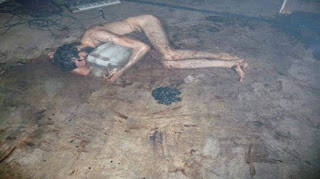A Gallipoli Misconception
Many British, Australian and New Zealanders assume that Gallipoli is a sacred site only for their nations.
Yet, two-to-three million Turkish visitors journey to Gallipoli (Çanakkale) every year, largely to honour Kemal Atatürk, who is credited with halting the ANZAC advance on 25 April 1915 and founding the Turkish republic in 1923.
Turkish visitors commemorate at many sites unknown to us, and we at sites unfamiliar to them.
Some symbols of commemoration and national pride are easy to see. For example, the crowning height of ANZAC - Chunuk Bair - is adorned with a giant Turkish flag that is visible from all corners of the old battlefield.
Other symbols are harder to discern but just as powerful. For instance, the Turkish national football team is renowned for aspiring to ‘defend like at Çanakkale’, in international matches, no doubt drawing inspiration from their forebears’ exploits.
This statue of Corporal Seyit, is one striking example of a revered Çanakkale
hero. A gunner in the Ottoman army,
Seyit famously carried three shells, each weighing 276 kilograms, to an artillery piece during the allied attempt to force the Dardanelles in March 1915.
It enabled the gun to continue firing, with the third shot inflicting severe damage to HMS Ocean, causing it to drift and strike a mine.
After the Battle of Çanakkale, Seyit was asked to have his photograph taken with the shell which he carried. Yet, Seyit could not move it. Afterwards, he uttered famously: ‘If war breaks out again, I'll lift it again.’ Thereafter, his photograph was taken with a wooden shell.
A statue of him carrying a shell was erected in 1992, near Kilitbahir Castle.
Take a sneak preview or pre-order ‘Night in Passchendaele’ (out in August 2023)
https://www.panmacmillan.com.au/9781761265976/night-in-passchendaele/
Scottbennettwriter.com
Photograph credit: Reddit











Comments
Post a Comment